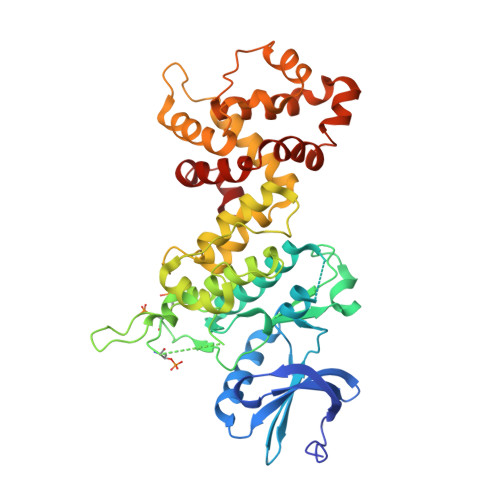Flavonol activation defines an unanticipated ligand-binding site in the kinase-RNase domain of IRE1.
Wiseman, R.L., Zhang, Y., Lee, K.P., Harding, H.P., Haynes, C.M., Price, J., Sicheri, F., Ron, D.(2010) Mol Cell 38: 291-304
- PubMed: 20417606
- DOI: https://doi.org/10.1016/j.molcel.2010.04.001
- Primary Citation of Related Structures:
3LJ0, 3LJ1, 3LJ2 - PubMed Abstract:
Signaling in the most conserved branch of the endoplasmic reticulum (ER) unfolded protein response (UPR) is initiated by sequence-specific cleavage of the HAC1/XBP1 mRNA by the ER stress-induced kinase-endonuclease IRE1. We have discovered that the flavonol quercetin activates yeast IRE1's RNase and potentiates activation by ADP, a natural activating ligand that engages the IRE1 nucleotide-binding cleft. Enzyme kinetics and the structure of a cocrystal of IRE1 complexed with ADP and quercetin reveal engagement by quercetin of an unanticipated ligand-binding pocket at the dimer interface of IRE1's kinase extension nuclease (KEN) domain. Analytical ultracentrifugation and crosslinking studies support the preeminence of enhanced dimer formation in quercetin's mechanism of action. These findings hint at the existence of endogenous cytoplasmic ligands that may function alongside stress signals from the ER lumen to modulate IRE1 activity and at the potential for the development of drugs that modify UPR signaling from this unanticipated site.
Organizational Affiliation:
Kimmel Center for Biology and Medicine of the Skirball Institute, New York University School of Medicine, New York, NY 10016, USA.

















